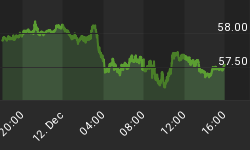The following is part of Quick Pivot that was published for our subscribers December 31, 2010.
"Get set for a great bull market"
"The stock market leads the economy" ~ Financial Post, December 22, 2010
"U.S. Equities push global advance as investors bet on economic rebound" ~ Financial Post, December 30, 2010
"Wall Street on talent hunt" ~ Reuters, December 30, 2010
"What crisis? Wall Street big spenders rediscover love of all things luxurious" ~ National Post, December 30, 2010
All-One-Market (AOM)
Now is the season to prepare an overview on the stock market for next year. For some research departments this involves separate studies on stocks, bonds and commodities. For us the phenomenon has been the belligerent policy of dollar depreciation that has prompted the most tradable assets to soar - not individually, but together.
Our outlook for next year is happening now and involves the transformation of a methodical rise into runaway speculation. This sets up a severe plunge as speculators lose the ability to bull the market. And as we have seen, governments have become highly speculative interventionists whose actions have exaggerated the ups and downs.
In engineering terms contra-cyclical is negative feedback that diminishes periodic action. By embracing speculative economic theories and practices the establishment has created a positive feedback mechanism that has fostered one of the greatest speculative eras in history.
A few weeks ago we reviewed our "Momentum Peak Forecaster" (MPF). As awkward is the title is - the model has anticipated the end of some of the most outstanding blow-offs on data back to 1970. When the indicator rises above 1.21 the action is becoming dangerous. We flagged it at 1.25 and now at 1.27 the rise is losing momentum. When it rolls over the warning signal becomes official.
It has worked on any kind of speculation as with narrowing European credit spreads in 1998, and retrospectively with the precious metals mania in 1980 and with the commodities boom in 1973.
Typically, the signal leads the end of the buying frenzy by one to two months, which is the first part of our 2011 outlook. The second part would be the collapse of speculative furies.
The prospect is fascinating and we should review the probability of it working out.
Currencies
The success of the Fed's dedication to depreciation relies upon the ability of speculators to boost prices and expand leverage. Without them the Fed's ambition is thwarted. If this wasn't the case, asset inflation would have been continuous. But the financial world is not perfect and traders will take a trend to instability and then to liquidity problems.
Traders accommodated the Fed as the dollar declined to 75.6 in early November. Our call for important lows in the DX includes the Downside Capitulation on our proprietary model and the conclusion of the Sequential Buy pattern. The latter completed in early November. Of interest was the exceptional low reading of 3 Percent Bulls, which compares to the two earlier intermediate bottoms at 7 Percent at 70.7 in April 2008 and at 74.2 in late 2009.
The low at 75.6 in November has the potential of being a very important low in the dollar. This is backed up by the MPF.
On the near-term, the DX became somewhat overbought on the initial surge to the natural target of 81. The consolidation can run into January.
The Canadian dollar keeps bumping its head at par and our view is that it is unlikely to get materially above 100. When the speculative party ends the C$ will decline - perhaps to 93.
Link to December 31, 2010 'Bob and Phil Show' on Howestreet.com: http://www.howestreet.com/index.php?pl=/goldradio/index.php/mediaplayer/1874
















